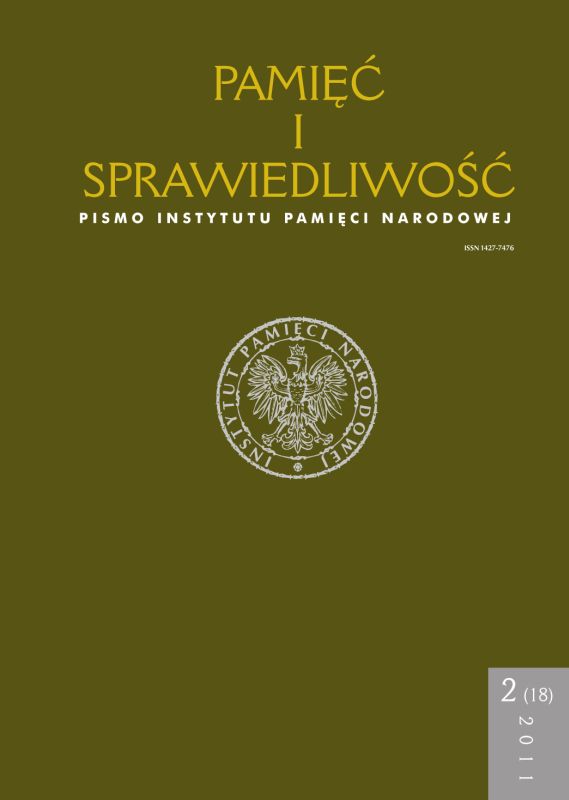Rewolucja 1989 roku w NRD
Pamięć i Sprawiedliwość, Bd. 18 Nr. 2 (2011), pages: 197-216
Publication date: 2011-12-30
Abstract
Literaturhinweise
I.-S. Kowalczuk, Endspiel. Die Revolution von 1989 in der DDR, München 2009 A. Sacharow, Mein Leben, München–Zürich 1991 A. Amalrik, Kann die Sowjetunion das Jahr 1984 erleben? Ein Essay, Zürich 1992 A. Steiner, Von Plan zu Plan. Eine Wirtschaftsgeschichte der DDR, München 2004 Ch. Hein, Die Ritter der Tafelrunde. Eine Komödie [w:] „Sinn und Form” 1989, nr 4, s. 793-829 I.-S. Kowalczuk, 17. Juni 1953 – Volksaufstand in der DDR. Ursachen – Abläufe – Folgen, Bremen 2003 I.-S. Kowalczuk, Das bewegte Jahrzehnt. Geschichte der DDR von 1949 bis 1961, Bonn 2003 I.-S. Kowalczuk, Od nieudanej rewolucji do zapobiegania powstaniom: panowanie SED w latach 1953–1961, „Pamięć i Sprawiedliwość” 2007, nr 11, s. 33–60 J. Gauck, „Ich habe die Wahl!” Diktaturerinnerung in der Demokratie [w:] Zwischen Selbstbehauptung und Anpassung. Formen des Widerstandes und der Opposition in der DDR, red. R. Eckert, I.-S. Kowalczuk, U. Poppe, Berlin 1995 , s. 405 M. Jankowski, Der Tag, der Deutschland veränderte. 9. Oktober 1989, Leipzig 2007 C. Brinton, Die Revolution und ihre Gesetze, Frankfurt am Main 1959 I.-S. Kowalczuk, 1989 in Perspektive: Ralf Dahrendorfs Antiutopismus, „Merkur. Deutsche Zeitschrift für europäisches Denken” 2005, nr 669, s. 65–69 I.-S. Kowalczuk, Die Zukunft bleibt spannend, ihre Geschichte nicht minder, „Berliner Debatte Initial” 2005, nr 2 (16) , s. 26–29
Am häufigsten gelesenen Artikel dieser/dieses Autor/in
- Łukasz Kamiński, Petr Blažek, Antoni Dudek, Andrzej Friszke, Idesbald Goddeeris, Anthony Kemp-Welch, Ilko-Sascha Kowalczuk, Mark Kramer, Petre Opriş, Vasil Paraskevov, Wojciech Polak, Aleksander Stykalin, [Ankieta] Czym była „Solidarność”? / Jaką rolę odegrała „Solidarność” w najnowszej historii? , Pamięć i Sprawiedliwość: Bd. 16 Nr. 2 (2010)
- Ilko-Sascha Kowalczuk, Jolanta Żukowska, Od nieudanej rewolucji do zapobiegania powstaniom: panowanie SED w latach 1953–1961 , Pamięć i Sprawiedliwość: Bd. 11 Nr. 1 (2007)
 Język Polski
Język Polski
 English
English
 Deutsch
Deutsch
 Français (France)
Français (France)
 Italiano
Italiano
 Русский
Русский


 PDF (Język Polski)
PDF (Język Polski)
